Heating & cooling with OCHSNER heat pumps
OCHSNER heat pumps are suitable for almost any application. The company offers a wide range for all output areas. They range from hot water heat pumps for individual households to heating solutions for buildings of all sizes and high capacity heat pumps for industry and infrastructure.
Where can heat pumps be installed?

OCHSNER offers a range of products for all types of building. In the residential sector, there is a wide range of solutions for detached houses and multi storey residential buildings, through to neighbourhood solutions for entire housing estates. Heating with heat pumps as well as cooling and hot water preparation are possible for office, commercial and industrial buildings, production halls and warehouses as well as for public and municipal buildings, sports facilities, cultural institutions or clinics.
Heat pumps are used in new and existing residential, commercial and municipal buildings. Not only passive and low energy houses are suitable for heating and cooling with heat pumps. Older buildings without special thermal insulation can also be supplied – even listed residential buildings or castles. The heat pump system must be sized individually for each building. OCHSNER offers the right technology, the best-suited appliance and the best solutions for all types of buildings.
In order to provide the high capacity and industrial heat pump sector with the technology and development options it needs, OCHSNER has founded its own affiliate – OCHSNER Energietechnik GmbH.
Heat pump output for any type of building
In new build projects, existing properties, older buildings or historical structures, installation is possible in principle. OCHSNER was the first manufacturer to launch heat pumps that generate up to 65 °C heating flow temperature in heat pump-only mode without an electric heating rod. This means that not only underfloor and wall heating systems can be connected but conventional radiators too. As a result, existing heating systems with installed radiators can be operated in the same way.
OCHSNER offers a wide range of heating heat pumps with heating outputs from 2 kW to 2500 kW. They are manufactured using components of the highest quality to ensure a particularly long service life. If the sizing is right, up to ¾ of the energy used is free and the amount of power required as drive energy is small. Depending on the model, OCHSNER systems can not only heat but also cool the house in summer and provide domestic hot water all year round. OCHSNER heat pumps are suitable for new build as well as refurbishment projects. You can find an overview of our product range below. Our trained OCHSNER system partners are happy to advise you as to which product best suits your requirements.
Heat pump for refurbishment
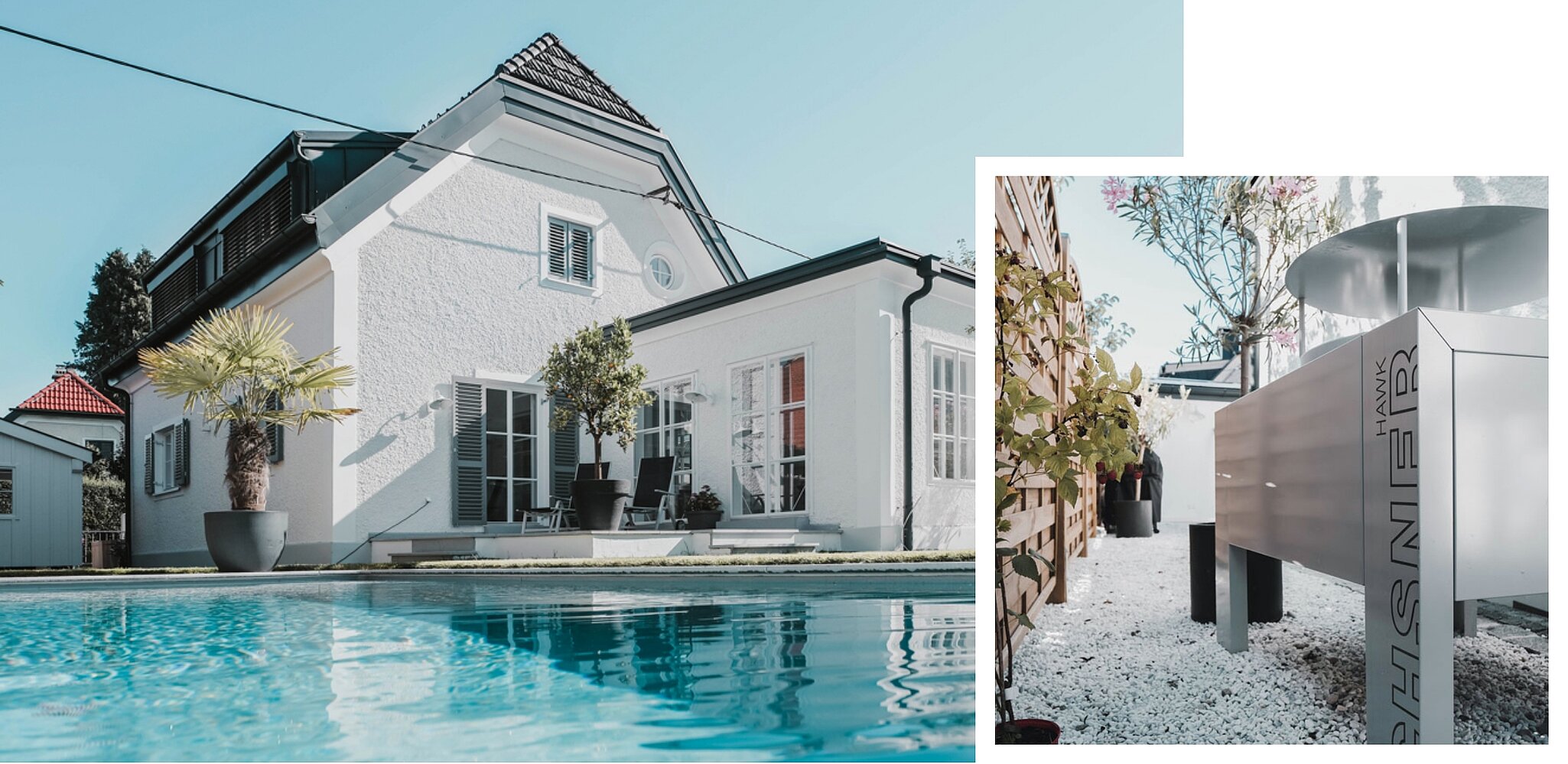
In most cases, heating and cooling with heat pumps is an efficient and environmentally friendly option for building refurbishment, which is also financially subsidised. When selecting and installing a heat pump, other factors must be considered along with its area of application. In principle, high efficiency Ochsner heat pumps can be installed with radiators in old buildings due to the high flow temperatures of up to 60 or 65 degrees. Depending on the condition of the building, it may make sense to improve the thermal insulation, install larger radiators or switch to panel heating as part of a more extensive renovation project. This increases the efficiency of any type of heating system and permits the heat pump to have smaller dimensions. The following points are important for the heat pump in a refurbishment project:
- Planning includes a heating load calculation that is as accurate as possible. This forms the basis for selecting a heat pump of the right size and output to ensure high energy efficiency and low energy costs.
- The choice of heat source is also important:
- Horizontal collectors are rarely chosen for existing buildings, as mature gardens would have to be dug up.
- Two highly efficient alternatives are geothermal probes and the use groundwater. However, geological conditions must be met and official permits must be obtained. Furthermore, preparations are comparatively extensive.
- Air as a heat source serves practically anywhere.
- In older, unrefurbished houses, an existing heating system can still be used and supplemented with a heat pump. This is called a hybrid heating system. Heating with a heat pump can then cover most of the heat demand, while the existing heating system is switched on for very cold days and only for short periods.
- In addition, cooling with a heat pump is possible, so that no additional air conditioning system needs to be installed in summer.
- There are attractive subsidies available for heating modernisation projects with heat pumps that replace fossil fuel heating systems.
Heat pumps for new build
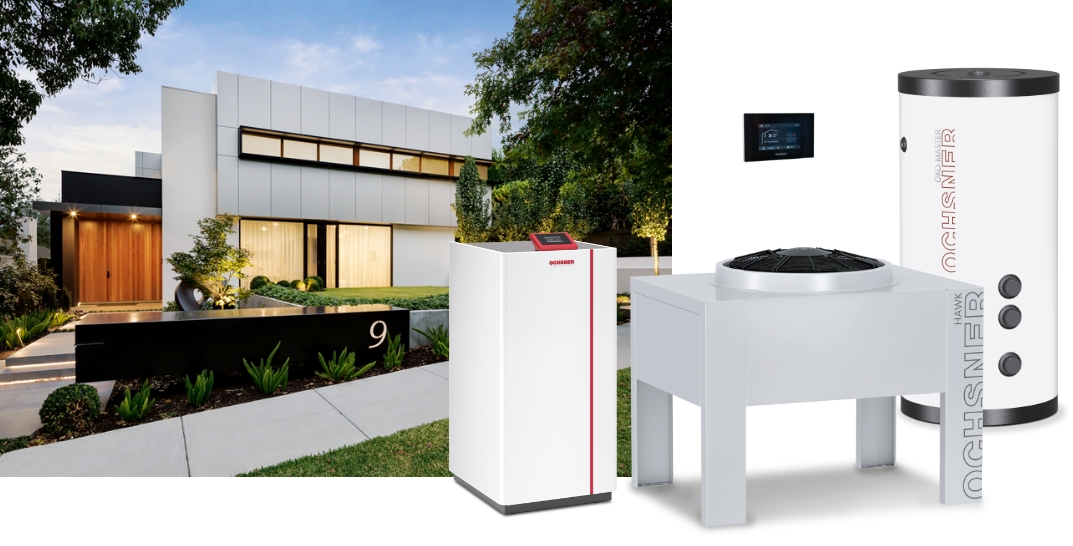
The heat pump is virtually the only alternative in new buildings. There are a number of good reasons:
- In addition to direct electric heating, the heat pump is the only fully fledged heating technology that completely dispenses with combustion and generates no direct CO2 emissions.
- It works much more efficiently than all other heating technologies, obtaining approx. 75% of the energy from the environment free of charge and climate-neutral, and only requires 25% electricity. This keeps the long term energy costs for the house low. In contrast, direct electric heating systems are powered 100% by electricity.
- Heat pumps are futureproof because they do not require fossil resources, which are becoming scarcer.
- The heat pump is not limited to just heating and domestic hot water; it can also be used for cooling. No other heating technology can do this.
- Heat pumps save costs in construction and maintenance: unlike combustion heaters, they do not require a chimney, which costs money to build and clean. The heat pump itself also needs to be inspected or maintained less frequently.
- KfW subsidised loans are available for particularly efficient new residential buildings.
Heat pumps in trade and industry
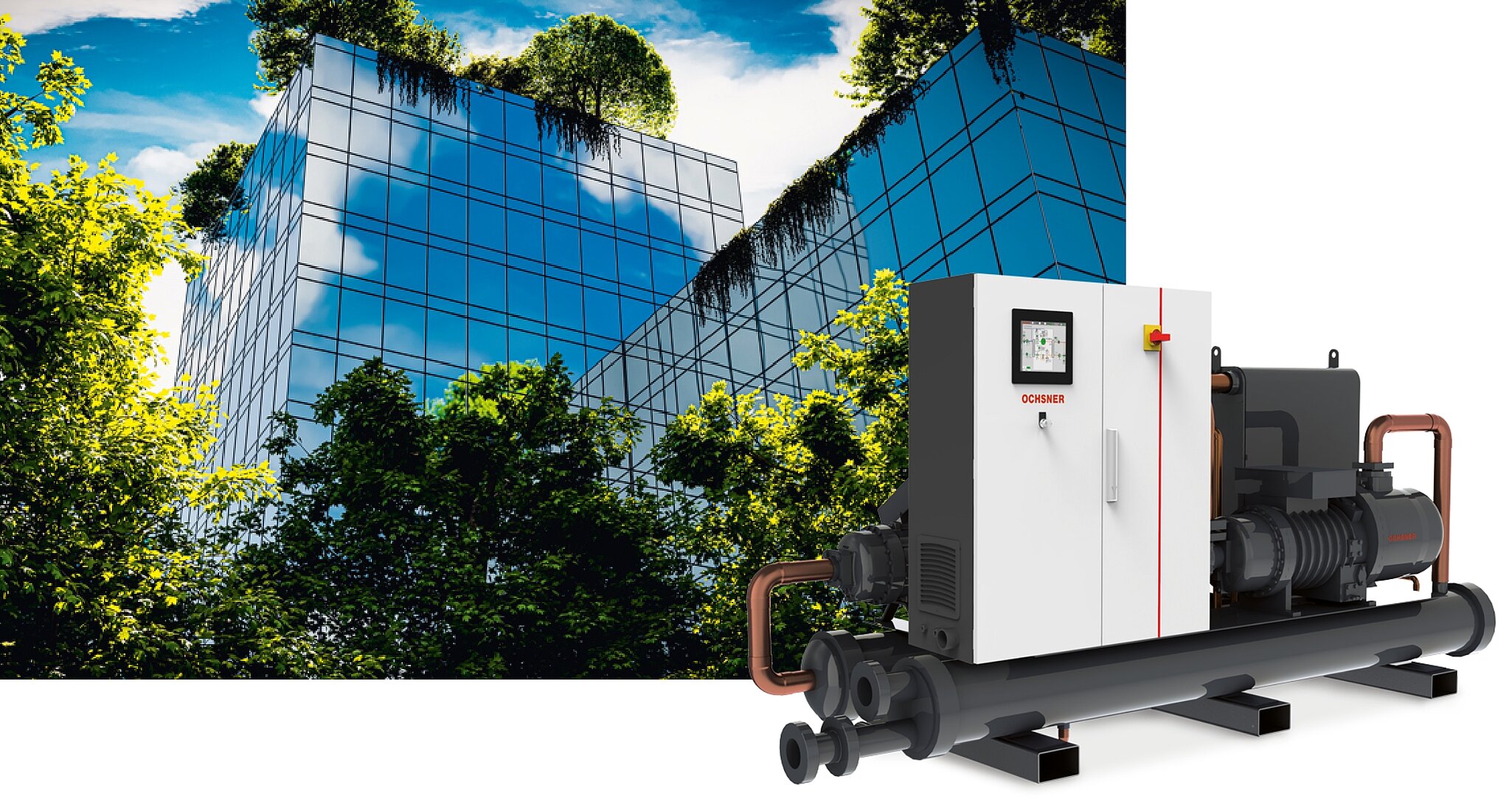
The areas of application for heat pumps extend far beyond heating residential buildings. In addition to heating, DHW heating and cooling for larger building units, there are numerous other applications. Typical examples include the provision of process heat, for example in food processing and paper manufacturing, in the chemical industry and many other sectors. In infrastructure, heat pumps can stabilise or raise temperatures in local and district heating networks. Swimming pool heating systems in public sports facilities, rehabilitation or hotel facilities as well as in the private sector are also areas of application for heat pumps.
Heat pumps in industry and commerce can use air, groundwater and geothermal energy as well as other heat sources. A typical example is the reuse of waste heat that previously had to be eliminated, from industrial processes or server rooms. Sewage systems are also a stable heat source that can be utilised, especially in municipal projects.
OCHSNER has founded its own sister company, OCHSNER Energietechnik specifically for industry and commerce. The company is dedicated exclusively to the development and manufacture of high capacity heat pumps in the output range from 60 kW to 2.5 MW. Machines for medium, high and maximum temperatures up to 130 °C are available, and are already operating successfully in many heat pump applications.
Heat pumps for domestic hot water
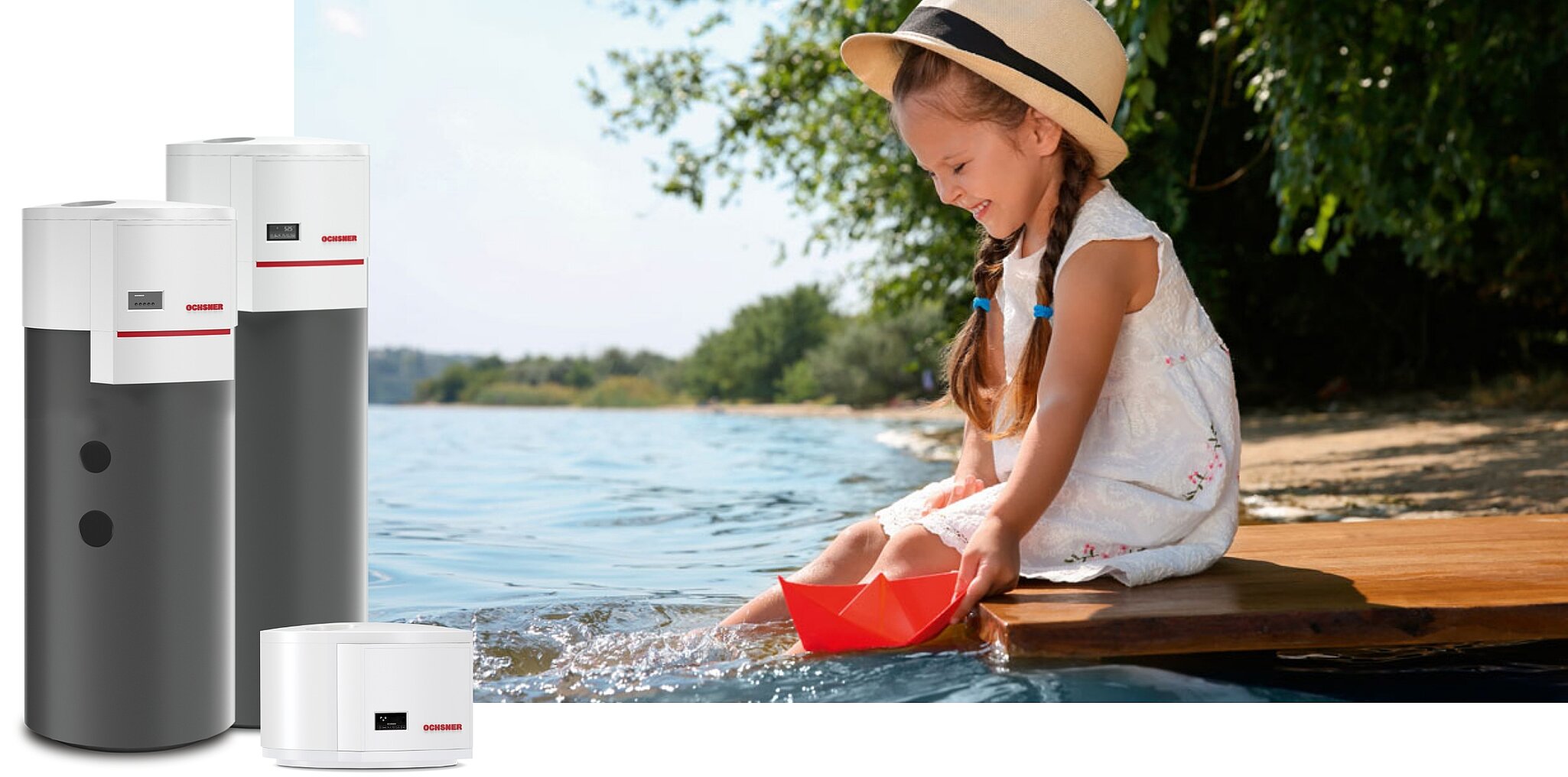
OCHSNER offers two options for domestic hot water heating:
- For efficient DHW heating, independent of your central heating, OCHSNER recommends the EUROPA series of hot water heat pumps. These complement boilers or heating heat pumps very well, as the main heating system can be switched off completely during the summer months. They are also a good alternative to solar thermal systems. These appliances also offer other benefits. Depending on the model, they can also dry, cool and ventilate side rooms in the home or use the power from your own PV system.
- If you choose a heat pump heating system for DHW heating, the heating heat pump will also heat the domestic hot water.
Cooling with heat pumps
Cooling is achieved via the heating pipes of underfloor and wall heating systems, which absorb the higher temperature indoors and transfer it to the cooler medium (ground or water) via a heat exchanger. Essentially, there is a distinction made between active and passive cooling. Depending on the model and sizing, OCHSNER heat pumps can offer both.
- Active cooling: The operating principle of the heat pump is reversed here. The compressor is in operation and brings the heat extracted inside to a higher temperature level via the refrigerant circuit. The heat is transferred to the heat source (ground, water, outdoor air). This method's cooling capacity is high, and the energy input is somewhat higher than with passive cooling. With this type of seasonal cooling using ground as the heat source (combining heating in winter and cooling in summer), according to VDI Guideline 4640 there are no concerns that the heat input could have negative consequences for the ground. On the contrary, active cooling offers an additional benefit. The heat emitted is stored in the ground and is available in winter to heat more efficiently with a heat pump.
- Passive cooling: With passive cooling the heat pump compressor is idle, the heat pump remains passive. The heat from the house is transferred to the brine via the surface heating system and heat exchanger and released to the ground or groundwater heat source. The cooling capacity is lower than with active cooling and equates to a few degrees. However, electricity consumption remains minimal because only the circulation pump for the brine in the geothermal collectors or ground or groundwater probes is running. Passive cooling is not technically possible with air as the heat source; only active air conditioning can be considered here.
Other areas of application for OCHSNER heat pumps
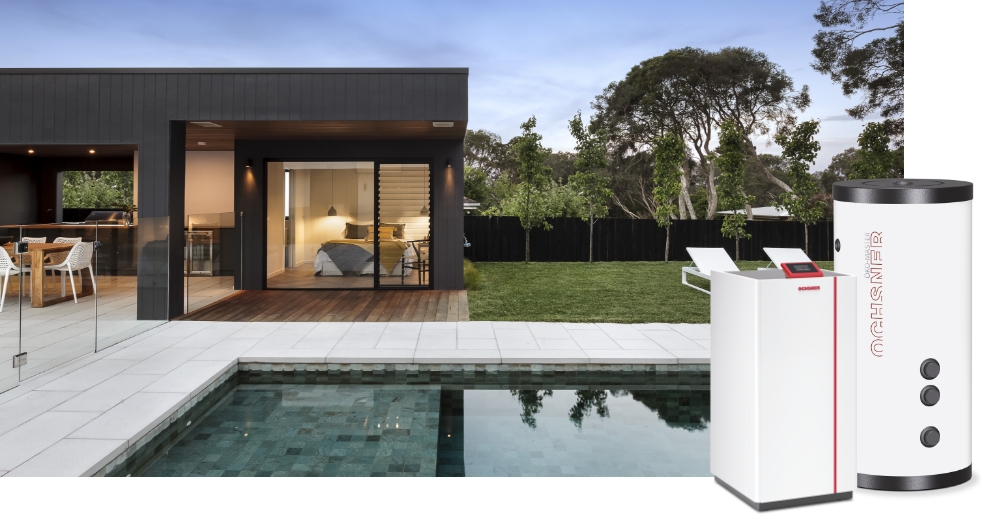
Beyond the typical areas of application for heat pumps in building heating and cooling, there are a number of other ways in which OCHSNER heat pumps can be used in an energy efficient way. A few common examples are:
- Room cooling and dehumidification: OCHSNER hot water heat pumps in the Europa series can draw their energy from adjacent rooms. In doing so, they cool the room slightly and dehumidify it. This effect can be put to good use, e.g. for basement rooms storing food or for laundry drying rooms.
- Pools: Heat pumps are very suitable for heating swimming pools, small private pools as well as larger systems in indoor and outdoor swimming pools, hotel complexes, etc.
- Process heat: Heat pumps can provide the heat required for many industrial processes. The fact that they can reuse existing waste heat for this purpose in many cases is particularly advantageous.
Thermal utilisation of waste water heat
The thermal utilisation of waste water heat is an area of application for heat pumps that offers considerable potential. As with groundwater, waste water has a relatively constant temperature and is therefore ideal as a heat source. Heat exchangers extract heat from the waste water, which is made usable for many applications by the heat pump process. For example, it is used in the following areas:
- Building heating: Waste water as a stable heat source in urban environments.
- Process heat: Many industrial processes lead to waste water being available at a high temperature.
- Swimming pool heating: Municipal swimming pools can utilise the sewage system, also usually municipally run, as a heat source.
- District and local heating: Waste water can help to raise and stabilise the temperature level in an energy efficient way via heat pumps in heating networks.
Heating with waste heat from servers
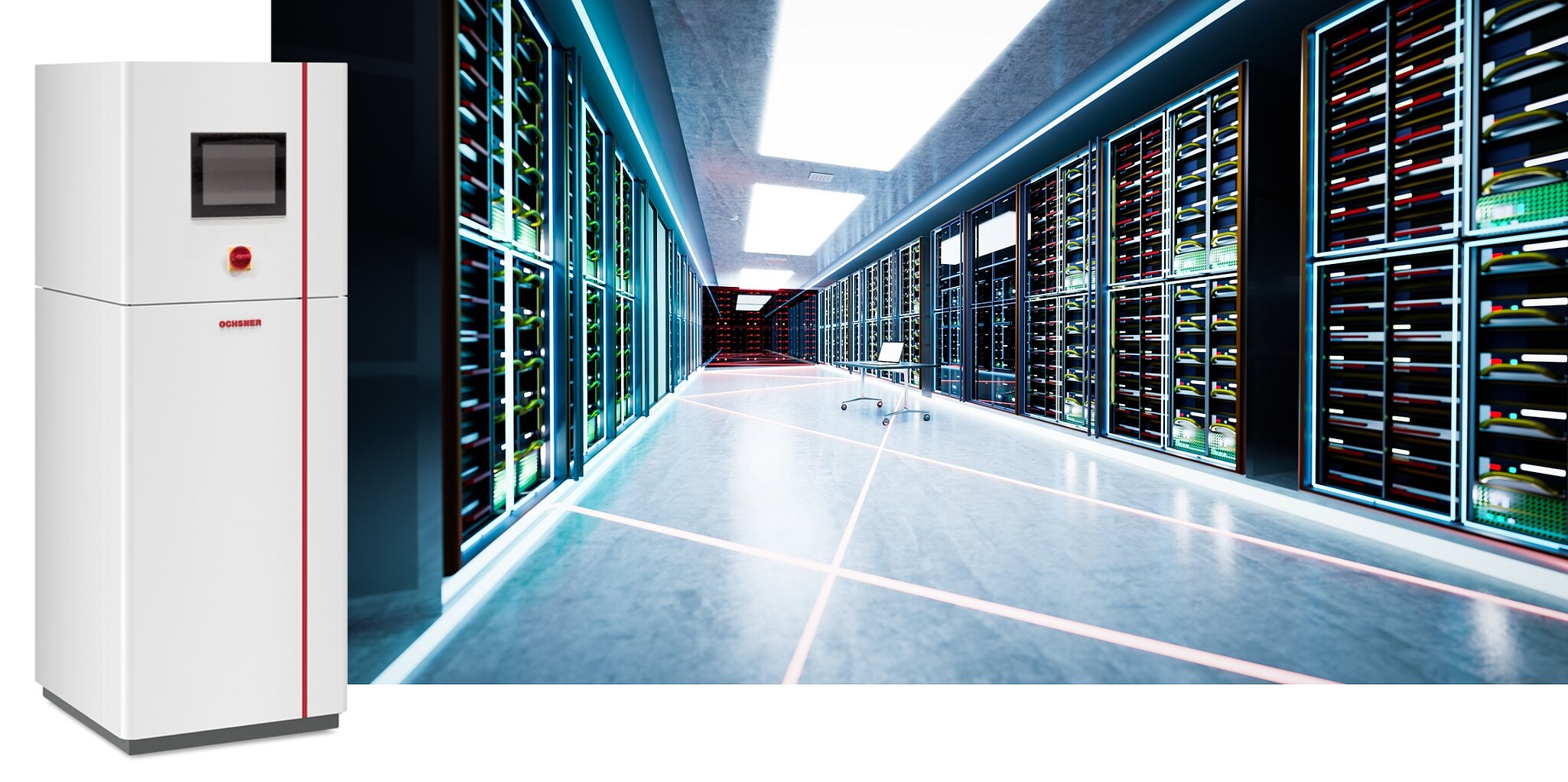
Server farms, a sign of advancing digitisation, consume large amounts of electricity. Their 2020 consumption accounted for an estimated 200 billion kilowatt hours, corresponding to around one percent of global electricity consumption. This generates high heat loads, which until now have mostly been dissipated and eliminated. Heat pumps can be used to cool the computers, and at the same time the heat can be put to good use for a variety of applications in building heating, providing DHW or process heat.
Would you like to benefit from the many advantages of a heat pump and heat your property in an affordable and sustainable way?
We would be happy to advise you – contact us right away!
